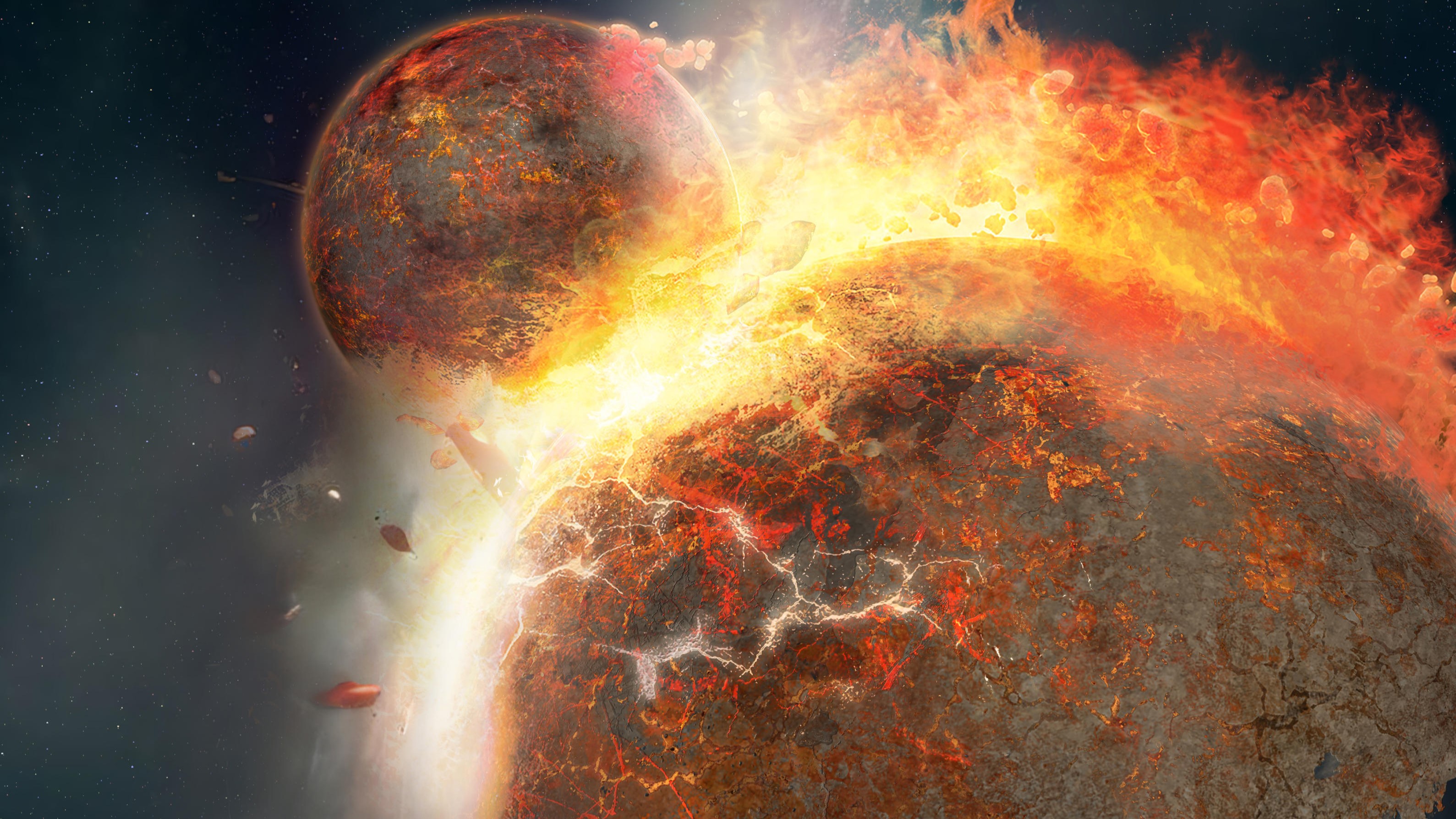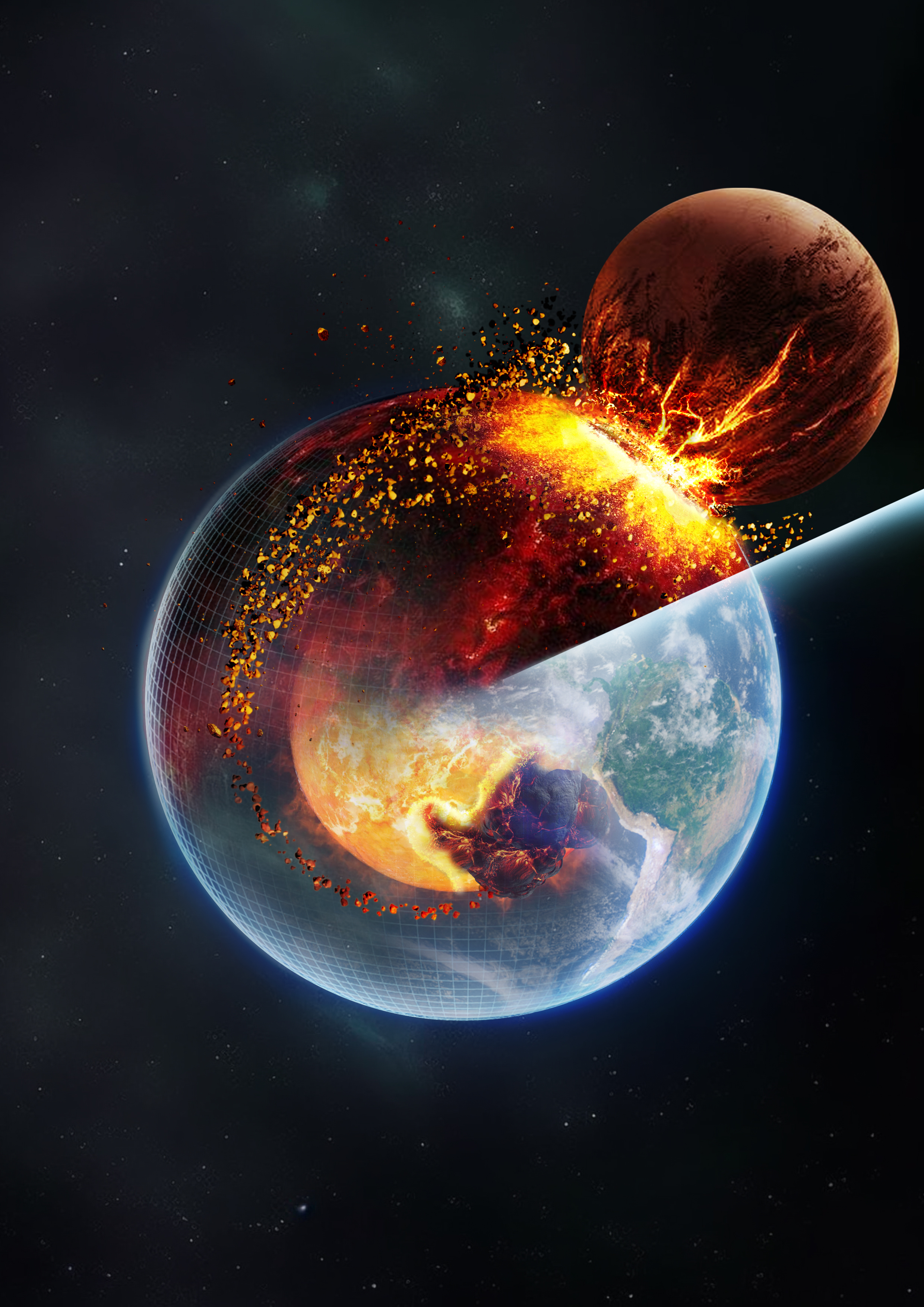
The remnants of a protoplanet that slammed into Earth and created the moon may still be lurking deep in our planet's mantle.
New research suggests that this impactor, which hit a just-formed Earth 4.5 billion years ago, still exists in Earth's mantle as two mysterious "blobs" that have long puzzled geoscientists. These blobs, known as large low-shear-velocity provinces (LLVPs), are places where seismic waves move more slowly than the rest of the mantle, suggesting there's a difference in temperature, composition or both.
Together, the blobs make up about 4% of the mantle. One is beneath Africa and the other is beneath the Pacific Ocean.
The moon-forming impact "is likely to be a very possible explanation for the origin of those two blobs," study first author Qian Yuan, a geophysicist at the California Institute of Technology, told Live Science.
For the new study, published today (Nov. 1) in the journal Nature Climate Change, Yuan collaborated with planetary scientists to simulate the moon-forming impact, its effect on the mantle and how remnants of the impacting body would have circulated in the mantle over the next 4.5 billion years. They first found that the impact of Earth with a body about the size of Mars — the accepted size of the impactor — would not have melted the entire mantle, only the upper half.
Related: Giant blobs in Earth’s mantle may be driving a 'diamond factory' near our planet’s core
"That solid lower layer will capture more than 10% of the impactor's mantle," Yuan said. This chunk of the impactor, "in terms of mass and volume, is very comparable with the two mantle blobs we see right now in the Earth."
The mantle circulation modeling showed that the impactor could gradually become incorporated into Earth's mantle. As it would be about 2.5% denser than the mantle, according to the model, it would sink and solidify, eventually stabilizing low in the mantle but not becoming incorporated into Earth's core. This also matches what is seen in the mantle blobs today, which sit more than 1,250 miles (2,000 kilometers) deep and are about 3% denser than their surroundings.
"Because it has a higher density, it will allow it to stay above Earth’s core-mantle boundary for 4.5 billion years," Yuan said.

Another recent study also pointed to the possibility that giant impacts might explain LLVPs, though that research did not implicate the moon-forming impact in particular. The study, published in October in the journal PNAS, also modeled the mantle circulation and found that precious metals brought to Earth by long-ago impacts could remain in LLVPs today. It's possible that the LLVPs contain material from multiple impacts that occurred early in Earth's history, Yuan and his colleagues wrote in their new study.
The mantle blobs are important, Yuan said, because their boundaries correlate with mantle plumes, where the magma is hotter than the surrounding regions. Mantle plumes, in turn, correlate with hotspots for volcanism, including diamond-carrying eruptions called kimberlites.
Volcanic activity provides the only glimpse into the geochemistry of mantle blobs, because volcanic rocks called basalts that erupt over those areas may hold traces of magmas from the blobs, Yuan said.
Much of the moon-forming impactor formed the moon itself, so comparing these rocks to lunar rocks could reveal whether both came from the same source. But for that, researchers will need samples from deep inside the moon's interior — something that might be possible with the planned crewed Artemis mission to the moon.
"Future missions to the moon can test our hypothesis," Yuan said.







